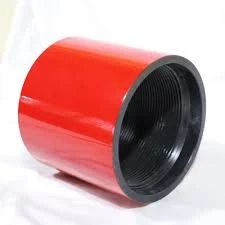- Afrikaans
- Albanian
- Amharic
- Arabic
- Armenian
- Azerbaijani
- Basque
- Belarusian
- Bengali
- Bosnian
- Bulgarian
- Catalan
- Cebuano
- Corsican
- Croatian
- Czech
- Danish
- Dutch
- English
- Esperanto
- Estonian
- Finnish
- French
- Frisian
- Galician
- Georgian
- German
- Greek
- Gujarati
- Haitian Creole
- hausa
- hawaiian
- Hebrew
- Hindi
- Miao
- Hungarian
- Icelandic
- igbo
- Indonesian
- irish
- Italian
- Japanese
- Javanese
- Kannada
- kazakh
- Khmer
- Rwandese
- Korean
- Kurdish
- Kyrgyz
- Lao
- Latin
- Latvian
- Lithuanian
- Luxembourgish
- Macedonian
- Malgashi
- Malay
- Malayalam
- Maltese
- Maori
- Marathi
- Mongolian
- Myanmar
- Nepali
- Norwegian
- Norwegian
- Occitan
- Pashto
- Persian
- Polish
- Portuguese
- Punjabi
- Romanian
- Russian
- Samoan
- Scottish Gaelic
- Serbian
- Sesotho
- Shona
- Sindhi
- Sinhala
- Slovak
- Slovenian
- Somali
- Spanish
- Sundanese
- Swahili
- Swedish
- Tagalog
- Tajik
- Tamil
- Tatar
- Telugu
- Thai
- Turkish
- Turkmen
- Ukrainian
- Urdu
- Uighur
- Uzbek
- Vietnamese
- Welsh
- Bantu
- Yiddish
- Yoruba
- Zulu
Understanding API Tubing and Casing Specifications for Efficient Oil and Gas Operations
Understanding API Tubing and Casing Charts A Guide to Oil and Gas Drilling
In the oil and gas industry, the extraction of hydrocarbons from deep underground reservoirs is a complex and technically challenging endeavor. Central to this process is the use of piping systems known as tubing and casing, which play a critical role in maintaining pressure, protecting the wellbore, and ensuring the safety and efficiency of drilling operations. To effectively communicate specifications and standards for these components, the American Petroleum Institute (API) has developed a series of tubing and casing charts that are essential for engineers, drilling contractors, and operators alike.
What are Tubing and Casing?
Before delving into the charts, it’s important to understand the difference between tubing and casing. Casing refers to the large-diameter pipes that form the structure of the well. They are installed after the well has been drilled and are designed to stabilize the wellbore, protect it from external pressures, and prevent the influx of unwanted fluids. Casing is also crucial for isolating different subsurface zones, especially when dealing with high-pressure or hazardous conditions.
On the other hand, tubing is a smaller diameter pipe that runs through the casing and is used for the production of hydrocarbons. Tubing allows for the controlled flow of oil or gas from the reservoir to the surface. It can be taken out of the well for maintenance and replacement, which is an advantage over casing that remains permanently installed.
The Importance of API Tubing and Casing Charts
API tubing and casing charts provide standardized specifications, dimensions, and performance data for various types of tubing and casing materials. These charts are indispensable tools for drilling engineers and project managers who must select the appropriate materials based on specific operational requirements, geological conditions, and fluid characteristics.
1. Standardization API charts ensure that all players in the drilling industry are speaking the same language when it comes to tubing and casing dimensions and performance metrics. This standardization helps streamline procurement, manufacturing, and installation processes.
2. Selection The charts aid in the selection of appropriate tubing and casing based on the expected pressure conditions, temperature, and the type of fluids being extracted. Understanding the yield strength, tensile strength, and corrosion resistance of different materials is crucial for ensuring the integrity of the well.
3. Safety By following the specifications outlined in the API charts, operators significantly reduce the risk of well failure, blowouts, and other hazardous incidents. Properly selected and installed tubing and casing contribute to the overall safety of drilling operations.
api tubing and casing chart

4. Regulatory Compliance The API standards are recognized by regulatory bodies across the world. Adhering to these standards not only ensures operational safety but also helps companies comply with local and international regulations.
Interpreting the Charts
When consulting an API tubing and casing chart, engineers will typically look for several critical pieces of information, including
- Dimensions Tubing and casing sizes are represented in terms of outside diameter (OD) and wall thickness. This information is crucial for ensuring compatibility with drilling equipment and tools.
- Performance Ratings The charts provide yield strength and burst pressure ratings, which inform engineers about the maximum pressure each component can withstand without failure.
- Material Specifications Many charts specify the grades of steel used for tubing and casing, including various types of carbon steel and corrosion-resistant alloys. These specifications help in selecting materials suited for the chemical characteristics of the drilling environment.
- Connections The type of connection used between lengths of tubing and casing is also vital, as it affects the overall integrity of the well. API charts provide information on different types of thread and coupling designs.
Conclusion
API tubing and casing charts are foundational tools in the oil and gas drilling industry, providing essential data for the safe and effective extraction of resources. By standardizing dimensions, materials, and performance metrics, these charts facilitate better decision-making, enhance safety, and promote regulatory compliance. Understanding how to interpret and utilize these charts is crucial for anyone involved in drilling operations, ensuring that wells are constructed to withstand the demanding conditions they will face deep underground. The proper selection and installation of tubing and casing ultimately contribute to the success and sustainability of oil and gas projects worldwide.
-
Tubing Pup Joints: Essential Components for Oil and Gas OperationsNewsJul.10,2025
-
Pup Joints: Essential Components for Reliable Drilling OperationsNewsJul.10,2025
-
Pipe Couplings: Connecting Your World EfficientlyNewsJul.10,2025
-
Mastering Oilfield Operations with Quality Tubing and CasingNewsJul.10,2025
-
High-Quality Casing Couplings for Every NeedNewsJul.10,2025
-
Boost Your Drilling Efficiency with Premium Crossover Tools & Seating NipplesNewsJul.10,2025







